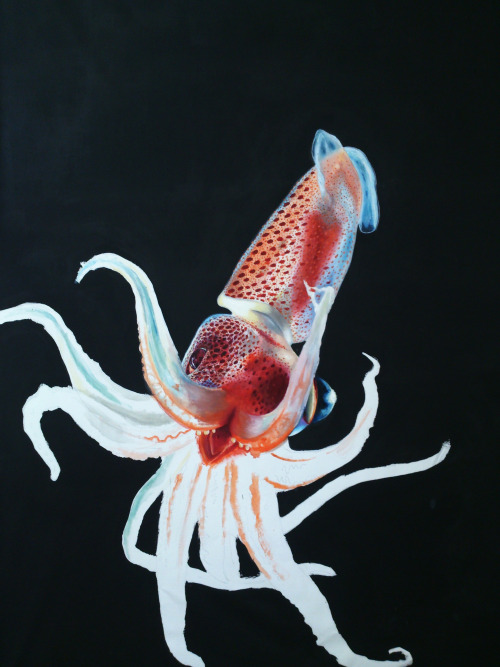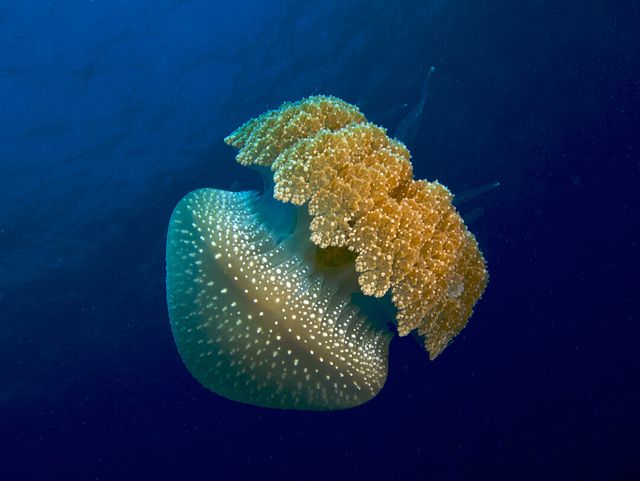
Those sponges are synthetic and are made by chemical means. These are not to be confused with the brightly colored sponges that are used for cleaning. When you buy a sea sponge from the store, what you are buying is the remaining silica and calcium matrix. Sponges can reproduce sexually or asexually. Their cells work independently almost as if they were in a colony. Spicules Sponges do not have a nervous system or distinct tissues. The bodies of sponges are made a fibrous matrix of spikes made from calcium and silica. The dark canals within the sponge provide great homes for amphipods, shrimp, worms, and brittle stars. The also clean the water by filtering gallons of water per day! Sponges also have symbiotic relationships with other organisms. Sponges clean the water by filtering gallons of water per day! Sponges also have symbiotic relationships with other organisms. There are over 5,000 species of marine sponges and only about 150 species of freshwater sponges. Sponges are sessile which means they do not move, but remain attached to objects. Sponges are the most simplistic multicellular animals. Some bryozoan colonies tend to look like fans and twigs while others look like a hard covering on a piece of algae. They can produce skeletons in all shapes and sizes. Bryozoans grow and colonialize on all types of hard substances such as sand, rocks, docks, and boats.

Each zooid has tentacles to trap diatoms and algae and a U shaped gut to process the food. An individual bryozoan animal is called a zooid, but because they are colonial, they are never found alone. In marine environments, the most abundant consumers are animals.īryozoans are colonial animals that build calcium skeletons. Megaplankton are large plankton such as Portuguese man-o-war and By-the-wind sailor jellyfishes.Ĭonsumers are organisms that are incapable of synthesizing their own food therefore, they must rely on producers as a source of energy. Macroplankton are larger than 1mm and contain organisms such as copepods and some worms. 06mm to 1mm and include mostly eggs and larvae of invertebrates. This group includes mostly unicellular animals. Many people think that plankton are always small, but zooplankton can come in many different sizes. Haloplankton consist of small invertebrates such as protozoans, copepods, amphipods, some coelenterates even some large fish! These organisms continue to develop and later become part of the nekton or benthos.

Meroplankton typically consist of eggs and larvae of larger invertebrates or fish. These two groups are referred to as meroplankton and haloplankton respectively. There are basically two types of animal plankton those that spend part of their lives as plankton, and those that spend their entire lives as plankton. These organisms are referred to as meroplankton. In contrast, there are organisms that live only part of their lives as plankton. These organisms are referred to as holoplankton. Some plankton live their entire lives as plankton. Additionally, there are bacterioplankton that resemble bacteria and archea and help recycle minerals and decaying organisms in the water column. Phytoplankton are plankton that are autotrophic and can produce their own food whereas zooplankton are plankton that rely on other organisms for food.

In fact, the term plankton comes from the Greek word planktos which means “wanderer.” These organisms include animals, plants, bacteria, or any other organisms which can not resist the ocean current. Plankton are any floating or feebly swimming organisms that live close to the surface of the ocean. In order to understand how marine organisms live with one another, one must first understand their general classifications. Generally, marine organisms are classified by where they live, how they get their food, and their body structure.


 0 kommentar(er)
0 kommentar(er)
